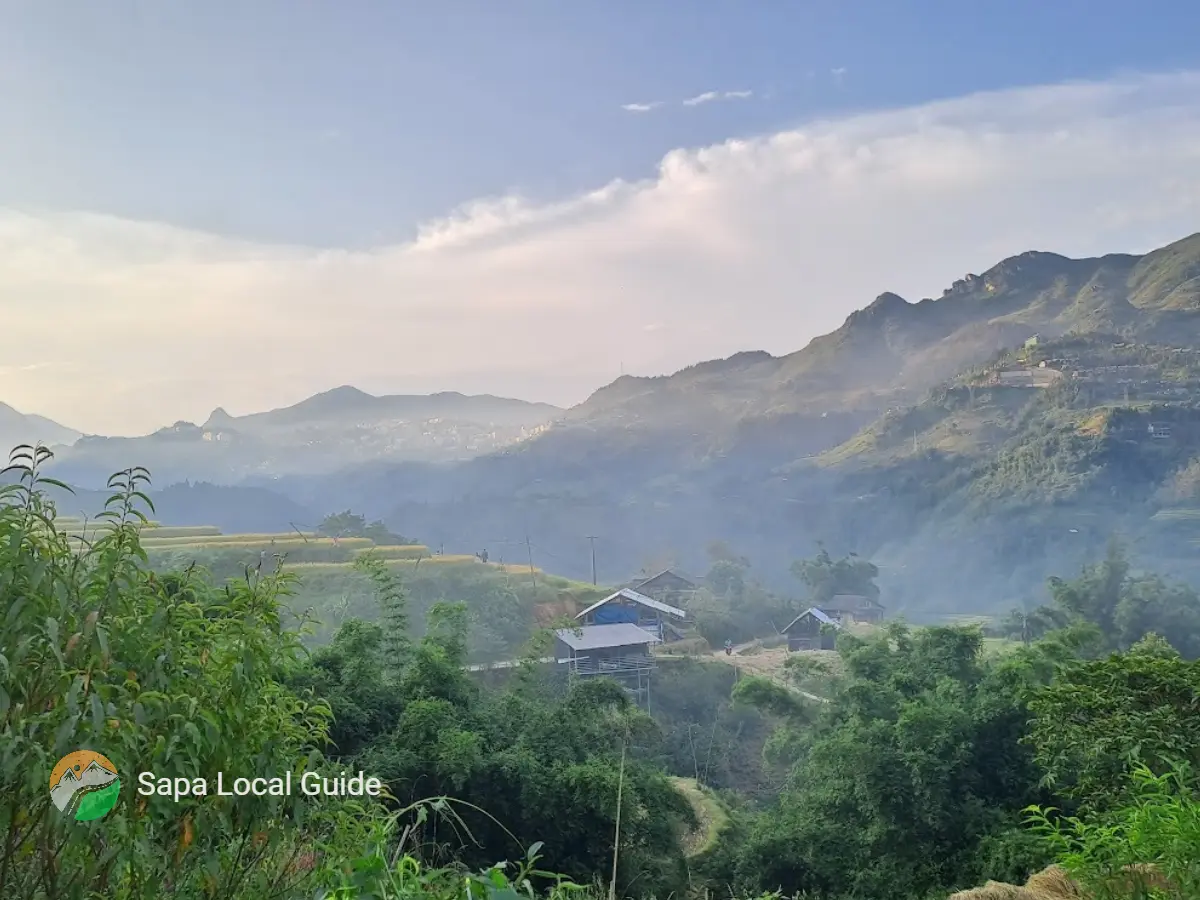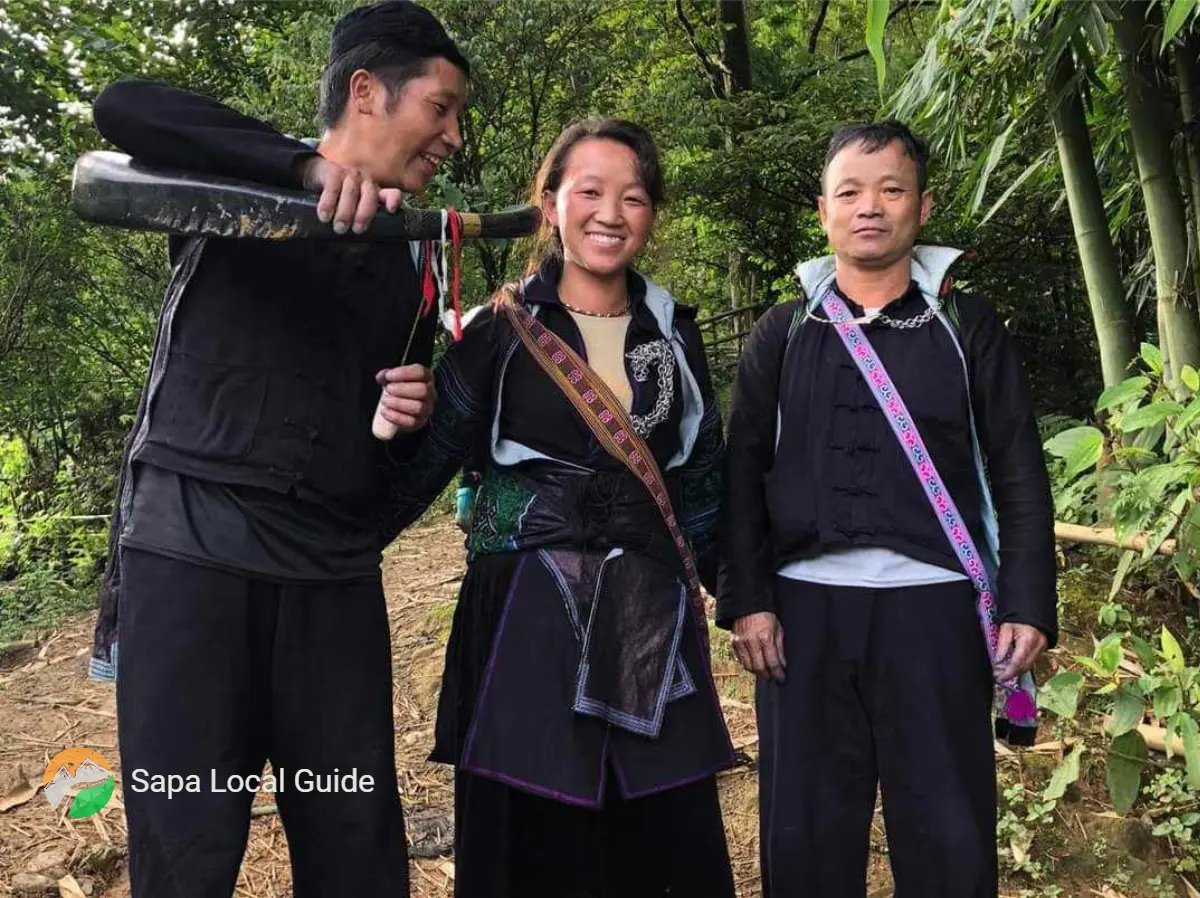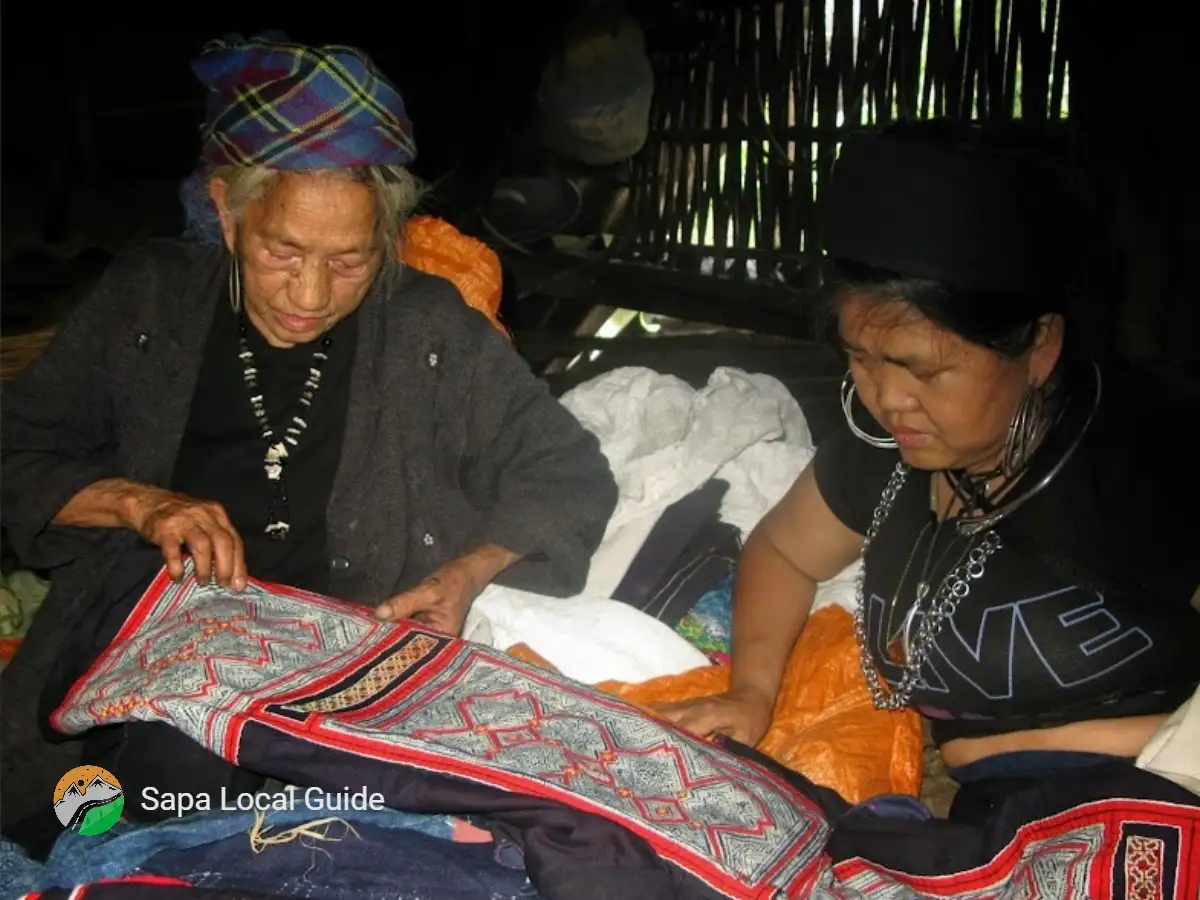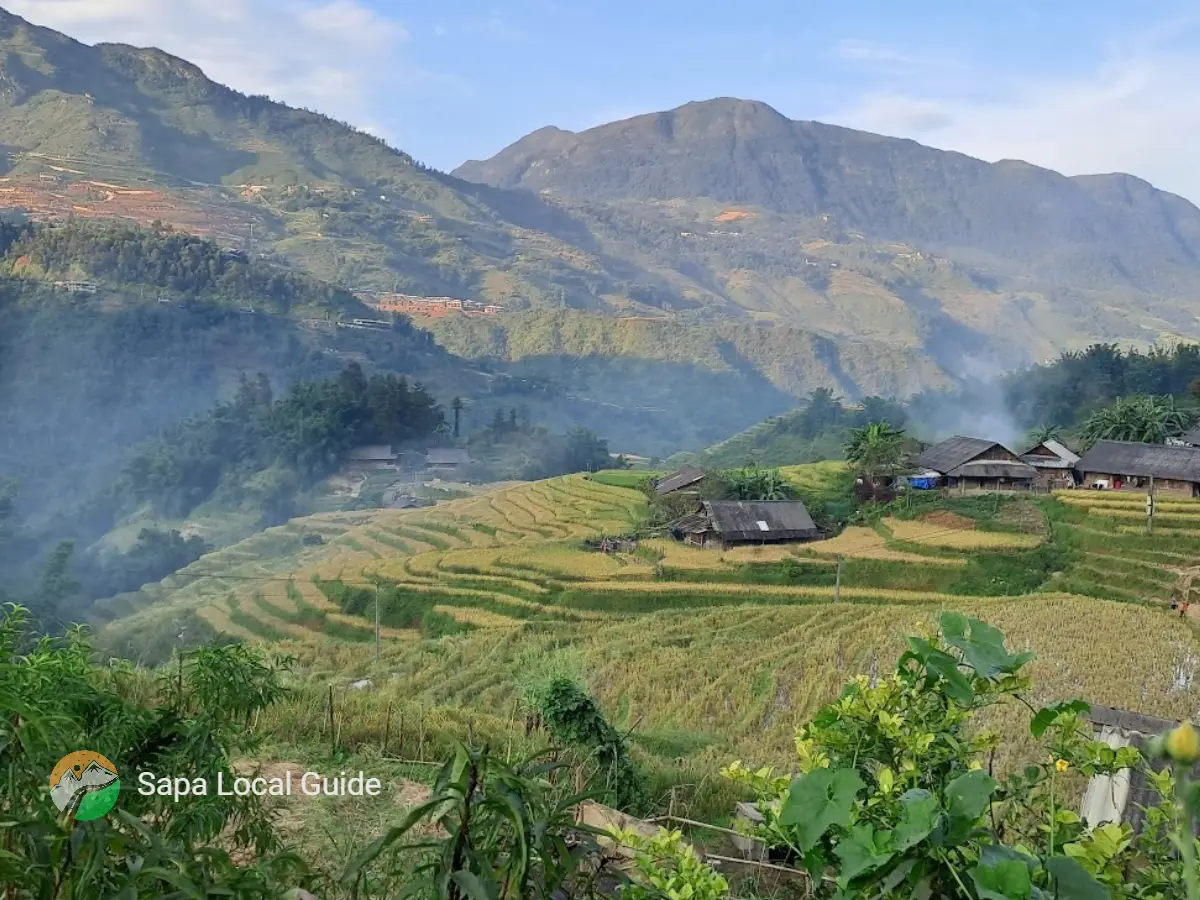![]()
Authentic Experience of Sapa
Sin Chai Village showcases the rich culture of the Hmong ethnic group, offering stunning landscapes, traditional crafts, and authentic local experiences.

Sin Chai is located in O Quy Ho ward, Sapa town. The village has beautiful terraced rice fields, friendly locals, fresh air, and green mountains with streams. It is about two miles from town, where the Black Hmong people live. The Hmong people make a living by farming, raising animals, weaving, and forging tools in Sin Chai.

Sapa has a population about 81,857 with the Hmong people making up 51.3%. In Sapa, the black Hmong live in separate villages, like Sin Chai, which is home to several dozen families living together.
The Black Hmong people here live in their traditional wooden houses. These houses have three rooms (two bedrooms and one living room), along with two side areas and two or three doors. The roof is usually made of wood too.
Animal shelters like pigpens, chicken coops, and cattle pens are located on either side of the house. In front of the house, people plant big trees such as pines and peach trees, with vegetables growing around them.
Hmong women wear colorful clothing, but the Black Hmong people prefer indigo-colored clothes.
A typical Black Hmong woman wears a dress, a calf-length skirt, aprons in front and back, a wide belt, headwear, and indigo leg warmers. They also wear silver jewelry like necklaces, earrings, bracelets, rings, and anklets.
=>Read more about Black Hmong people.
Sapa 1 Day

1 day experience,Rice fields, valley, villages. Moderate to challenging, Private,Vegan-friendlyCultural immersion & active adventure
Motorbike Tour

1 day experience,Rice fields,waterfall.Challenging,Private tours friendly Cultural immersion, active adventure
Sapa 2 Days

2 days 1 night experience. Moderate to challenging, adventure. Mountains, valleys, rice fields and villages. Vegan-friendly
Sapa 3 Days

3 days 2 night experienc, Moderate to challenging. Mountains, valley, rice fields & villages. Private tours. Vegan-friendly

Black Hmong men also wear indigo clothes, including shirts, belts, and trousers. Some men wear silver necklaces and rings as well.
Divorce is very rare in Hmong families Sin Chai Village. Hmong couples usually live in harmony, working together on the farm and going to the market.
To support their family, Hmong people do many types of work. They raise buffaloes, cows, chickens, and ducks for food and farming.
They grow vegetables, rice, and corn for both eating and selling. They also make silver jewelry and textiles to sell and use.
Handmade Hmong items like full women's dresses, silver necklaces, earrings, bracelets, rings, and anklets are popular in the souvenir market. Don’t forget to buy these special products if you visit Sin Chai, Sapa one day.

In the Hmong culture, ancestor worship is very important. In Sin Chai, sons worship all of their deceased family members.
The Hmong people also hold ceremonies to worship spirits of the house, forest, stream, and more.
If you're in Cat Cat village, just go straight for about one mile on the main road to reach Sin Chai.
You need to buy tickets to visit Cat Cat (150,000 VND/adult), but visiting Sin Chai village is free.
If you're in the center of Sapa town, find Fansipan Street and head downhill for one mile to reach Cat Cat village, then continue another mile to Sin Chai.
There are many signposts along the way, making it easy to find the villages. You should buy a Sapa map. You can walk, rent a motorbike on the street, or take a taxi, depending on the weather.

Sapa 1 Day

1 day experience,Rice fields, valley, villages. Moderate to challenging, Private,Vegan-friendlyCultural immersion & active adventure
Motorbike Tour

1 day experience,Rice fields,waterfall.Challenging,Private tours friendly Cultural immersion, active adventure
Sapa 2 Days

2 days 1 night experience. Moderate to challenging, adventure. Mountains, valleys, rice fields and villages. Vegan-friendly
Sapa 3 Days

3 days 2 night experienc, Moderate to challenging. Mountains, valley, rice fields & villages. Private tours. Vegan-friendly
Complete with itinerary, destinations, food, accommodation and tips!
